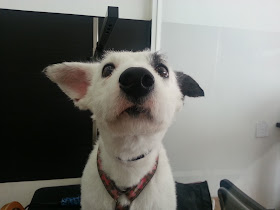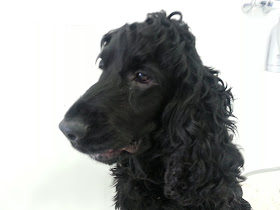Al llegar la primavera, las plantas gramíneas florecen formando las espigas y los parques y los campos se llenan de ellas. Por su particular forma de arpón consiguen quedarse enganchadas en el pelo y las patas de nuestros perros mientras pasean o juegan. El problema es que cuando se clavan en la piel difícilmente se pueden retirar ya que se abren como un paraguas. Cuando se clavan en las patas, la propia presión del peso del perro al caminar hace que se claven cada vez más profundamente, provocando infecciones, dolor e incapacidad para moverse en el perro.
En este caso la espiga hay que sacarla haciendo una pequeña incisión en la piel y extrayéndola con unas pinzas. Precisará antibiótico y curas.
Pero no sólo se clavan en las patas o en la piel sino que también se pueden introducir en los diferentes orificios corporales del perro provocando graves complicaciones.
Otra complicación muy grave es que la espiga pase directa a la traquea y al pulmón bien porque la espiga se ha alojado en la nariz y pasa al interior cuando el perro respira o bien porque al jugar o correr la espiga pasa por la boca directa al pulmón. Este es uno de los casos más graves, muy difícil de diasgnosticar y necesitará retirarla urgentemente con un fibrobroncoscopio y bajo anestesia general.
Si la espiga se introduce en el ojo también nos daremos cuenta pronto ya que es muy molesto. Hay que lavarlo con rapidez para que no produzca una lesión en la córnea. Pero si se queda alojada dentro del párpado será necesario acudir al veterinario para que la extraiga utilizando un colirio anestésico. Después será necesaria la aplicación de un colirio antibiótico para prevenir la infección. El ojo se suele irritar y molesta muchísimo.
PREVENCIÓN
1. Evitar pasear al perro por zonas donde hay muchas espigas.
2. Cepillar el perro con regularidad.
3. Revisar almohadillas y espacios interdigitales diariamente
4. Revisar orejas sobre todo en perros con orejas largas, caídas y con mucho pelo, como los cocker.
5. Llevar al perro con pelo corto si va a pasar mucho tiempo al aire libre.
Arriving spring, grass plants bloom forming spikes and the parks and fields are filled with them. By their particular form of harpoon get caught in the hair and legs of our dogs while they are walking or playing. The problem is that when hard nailed in the skin they can be removed since they open like an umbrella. When nailed in the legs, the own pressure of the weight of the dog while walking makes them to be driven more and more deeply, causing infections, pain, and inability to move the dog.
In this case spike should be removed by making a small incision in the skin and pulling it with a pair of tweezers. The dog will need antibiotic and cures.
But not only nailed on the legs or on the skin, but they also can enter in the various body orifices of the dog causing serious complications.
If inserted in the ears can cause infection, otitis, or perforation in the eardrum. To prevent this from happening you should check the ears after a walk especially if the dog moves his head vigorously. If you can visualize the spike, remove with care, but if it is hosted inside of duct don´t attempt to remove with the finger because we can introduce it more deeply. You have to go to the vet to remove it with an otoscope and a pair of suitable tweezers.
The spikes in the nostrils cause a much more acute clinic since the hassle is much greater. It will start sneezing and rubbing the nose with his legs. If the spike does not come out with sneezes it may happen two things, the spike passes to the interior and the dog finally swallow it or remains housed in the nostril worsening symptoms and having to go to the vet to remove it under anesthesia, because it´s necessary that the dog stays quiet and is a painful maneuver since the nose is a very sensitive mucosa , inaccessible and bleeds easily.
Another very serious complication is that the spike passes directly to trachea and lung because the spike stayed in the nose goes inside when the dog breathe or when the dog runs or plays passes direct from mouth to the lungs. This is one of the most serious cases, very difficult to diagnose and it´ll be necessary to remove it urgently with a bronchoscope under general anesthesia.
If spike is inserted into the eye we´ll realise soon since it is very annoying. We must wash it quickly so that it does not produce a lesion in the cornea. But if it is hosted inside the eyelid you will need to go to the vet so he can remove it using an anesthetic eye drops. Then will be required the application of an antibiotic eye drops to prevent infection. The eye is often irritate and annoys a lot.
PREVENTION
1 Avoid walking the dog through areas where there are many spikes.
2 Brush the dog on a regular way.
3. Check paws and interdigital spaces every day
4. Check ears in dogs with long, drooping ears and long hair, like the cocker.5. Take the dog with short hair if he spends much time outdoor.
Fotos: Oh que perro!







No hay comentarios:
Publicar un comentario